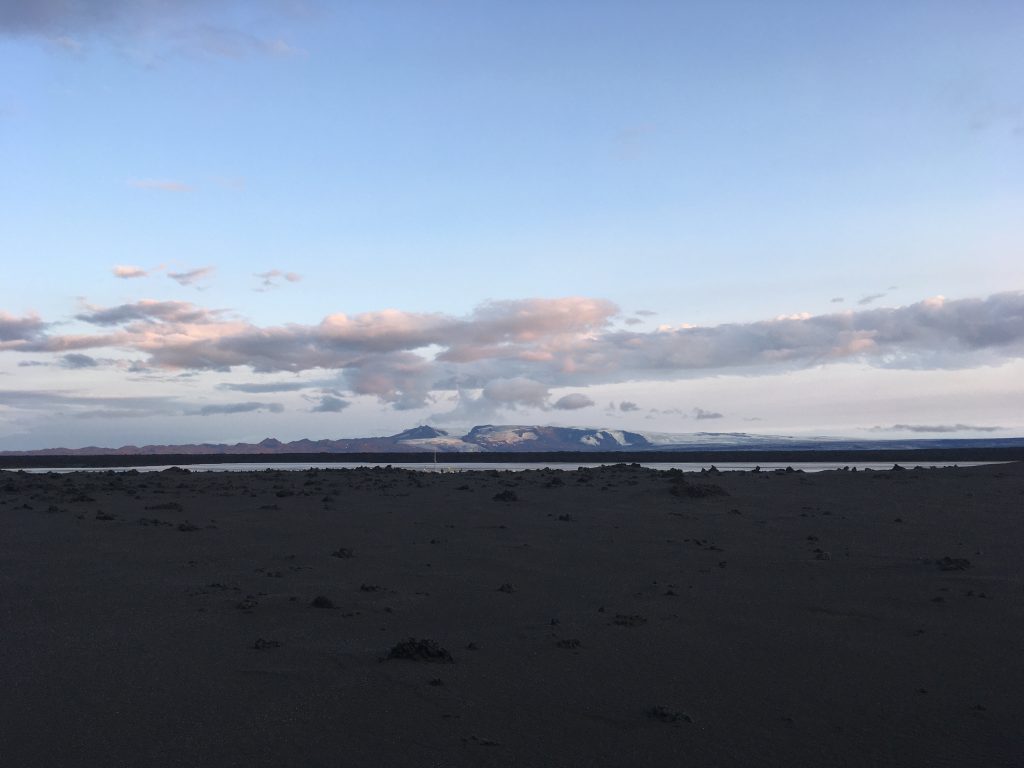Our main site in Paradise is entirely flooded. Since two days, we do experience quite warm temperatures in the low twenties and strong southerly foehn winds blowing down from the glacier. Reason for this is the dance of a high and a low pressure system over the Atlantic Ocean south of Iceland. It generates a northwards air flow across central Iceland – statistically perfect wind conditions for dust emission! And a pressure constellation we are waiting for. However, this atmospheric circulation pattern comes with a ‘but’. Like a hairdryer, the wind increases the air temperature at the surface of the glacier, which in turn enhances the melting rates – sending a lot of water to our main measurement site.
We are prepared for having some water around at our main site occasionally. Up to a few centimeters depth, it’s not pleasant, but we can live with it – if it dries up quickly. But not with some 30 centimeter and a river running through the setup. That’s way too much water for the instruments, which are supposed to measure parameters like turbulence and hopping sand grains.

Luckily, we see the water coming. Since the early afternoon, it is arriving in the terminal lake area. Slowly but persistently. Earlier during the day than usual, which is suspicious and warns us that this time more water may arrive. At some point during the afternoon it becomes obvious that this time the flooding will be more pronounced than what we had experienced so far. Torn between the risk that the water level will reach the instruments, and the hope that it will magically stop increasing before, we eventually turn off all instruments and start dismounting the low-hanging ones. Just in time, as it turned out later. Early evening, we realize that even these instruments placed on two pallets (… water will never get that deep …) will get flooded if not removed. In a hurry, with all persons available – and in shorts – we carry all equipment to elevated ground. Hopefully being safe for the night …

